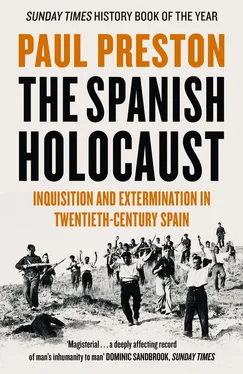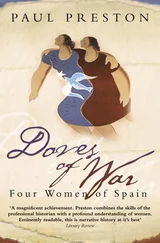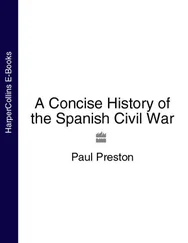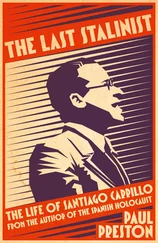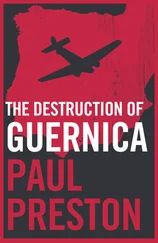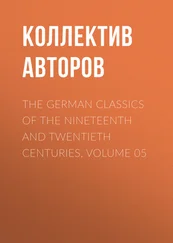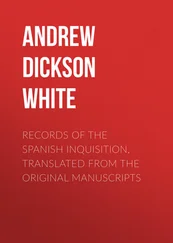On 26 September, Gil Robles made his move with a communiqué stating that, in view of the present cabinet’s ‘weakness’ regarding social problems, and irrespective of the consequences, a strong government with CEDA participation had to be formed. In a sinuous speech in the Cortes on 1 October, claiming to be motivated by a desire for national stability he introduced an unmistakable threat: ‘we are conscious of our strength both here and elsewhere’. After the inevitable resignation of the cabinet, President Alcalá Zamora entrusted Lerroux with the task of forming a government, acknowledging the inevitability of CEDA participation, but hoping that it would be limited to one ministry. Gil Robles insisted on three in the knowledge that this would incite Socialist outrage. 80
Gil Robles’s provocation was carefully calibrated. His three choices for the cabinet announced on 4 October were José Oriol y Anguera de Sojo (Labour), Rafael Aizpún (Justice) and Manuel Giménez Fernández (Agriculture). Anguera de Sojo was an integrist Catholic (his mother was being considered by the Vatican for canonization), an expert on canon law and lawyer for the Benedictine Monastery of Montserrat. He had been the public prosecutor responsible for a hundred confiscations and numerous fines suffered by El Socialista. Moreover, as a Catalan rightist, he was a bitter enemy of the Esquerra Republicana de Catalunya, the ruling party in the Generalitat. As a hard-line civil governor of Barcelona in 1931, his uncompromising strike-breaking policies had accelerated the CNT move to insurrectionism. The choice of Anguera could hardly have been more offensive. The Esquerra sent a deputation to see Alcalá Zamora and plead for his exclusion. Gil Robles refused point-blank the President’s suggestions. 81Aizpún, CEDA deputy for Pamplona, was close to the Carlists. Giménez Fernández, as deputy for Badajoz, was inevitably assumed to be as faithful a representative of the aggressive landlords of that province as Salazar Alonso had been and likely, as Minister of Agriculture, to intensify the awful repression that had followed the harvest strike. The suppositions about the Minister were wrong, since he was a moderate Christian Democrat, but those about the Badajoz landlords were right. Because of his relatively liberal policies, Giménez Fernández was rejected as a candidate for Badajoz in the 1936 elections and was forced to run in Segovia. 82
The Socialists had every reason to fear that the new cabinet would implement Salazar Alonso’s determination to impose reactionary rule. After all, on 222 of the 315 days of Radical government until the end of July, the country had been declared to be in a state of emergency, which meant the suspension of constitutional guarantees. Sixty of the ninety-three days on which there was constitutional normality had been during the electoral period of late 1933. Press censorship, fines and seizures of newspapers, limitation of the freedom of association, declaration of the illegality of almost all strikes, protection for fascist and monarchist activities, reduction of wages and the removal of freely elected Socialist town councils were seen as the establishment of a ‘regime of white terror’. These were the policies that Gil Robles, in his speech of 1 October, had denounced as weak. It was impossible to avoid the conclusion that he intended to impose more repressive ones. 83
In the last few days of September, still hoping to persuade the President to resolve the crisis by calling elections, the Socialist press had resorted to desperate – and empty – threats. El Socialista implied that preparation for the revolutionary action was well advanced: ‘We have our army waiting to be mobilized, and our international plans and our plans for socialism.’ 84At the end of the month, the paper’s editorial asked rhetorically: ‘Will it be necessary for us to say now, stating the obvious, that any backward step, any attempt to return to outmoded policies will inevitably face the resistance of the Socialists?’ 85Clearly, Julián Zugazagoitia, the thoughtful director of El Socialista, knew full well that the Socialist movement was utterly unprepared for a revolutionary confrontation with the state. If his editorials were not senseless irresponsibility – and Zugazagoitia, a faithful supporter of Prieto, was no extremist – they have to be seen as a last-ditch threat to the President.
Largo Caballero’s revolutionary committee made no preparations for the seizure of power and the ‘revolutionary militias’ had neither national leadership nor local organization. He placed his hopes on revolutionary bluster ensuring that Alcalá Zamora would not invite the CEDA into the government. Just before midnight on 3 October, when news reached the committee that a government was being formed with CEDA participation, Largo Caballero refused to believe it and ordered that no action be taken to start the movement. Even once the truth of the news could no longer be ignored, only with the greatest reluctance did he accept that there was no choice and the threatened revolution had to be launched. 86
Throughout 1934, the leaders of the PSOE and the CEDA had engaged in a war of manoeuvre. Gil Robles, with the support of Salazar Alonso, had enjoyed the stronger position and he had exploited it with skill and patience. The Socialists were forced by their relative weakness to resort to vacuous threats of revolution and were finally manoeuvred into a position in which they had to implement them. The results were catastrophic.
After defeat in strike after strike in the first nine months of 1934, Socialist intentions in the events that began on the morning of 4 October 1934 were necessarily limited. The objective was to defend the concept of the Republic developed between 1931 and 1933 against the authoritarian ambitions of the CEDA. The entry of the CEDA into the cabinet was followed by the existence for ten hours of an independent Catalan Republic; a desultory general strike in Madrid; and the establishment of a workers’ commune in Asturias. With the exception of the Asturian revolt, which held out against the armed forces during two weeks of fierce fighting and owed its ‘success’ to the mountainous terrain and the special skills of the miners, the keynote of the Spanish October was its half-heartedness. There is nothing about the events of that month, even those in Asturias, to suggest that the left had thoroughly prepared a rising. In fact, throughout the crisis, Socialist leaders were to be found restraining the revolutionary zeal of their followers. 87
To allow the President time to change his mind, on 4 October the UGT leadership gave the government twenty-four hours’ notice of a peaceful general strike in Madrid. Anarchist and Trotskyist offers of participation in a revolutionary bid were brusquely rebuffed. Accordingly, the new government was able with considerable ease to arrest workers’ leaders and detain suspect members of the police and the army. Without instructions to the contrary, Socialist and anarchist trade unionists in Madrid simply stayed away from work rather than mounting any show of force in the streets. The army took over basic services – conscripts were classified according to their peacetime occupations – and bakeries, right-wing newspapers and public transport were able to function with near normality. Those Socialist leaders who managed to avoid arrest either went into hiding, as did Largo Caballero, or went into exile, as did Prieto. Their followers were left standing on street corners awaiting instructions and within a week the strike had petered out. All the talk of a seizure of power by revolutionary militias came to nothing. Hopes of collaboration by sympathizers in the army did not materialize and the few militants with arms quickly abandoned them. In the capital, some scattered sniper fire and many arrests were the sum total of the revolutionary war unleashed. 88
Читать дальше
